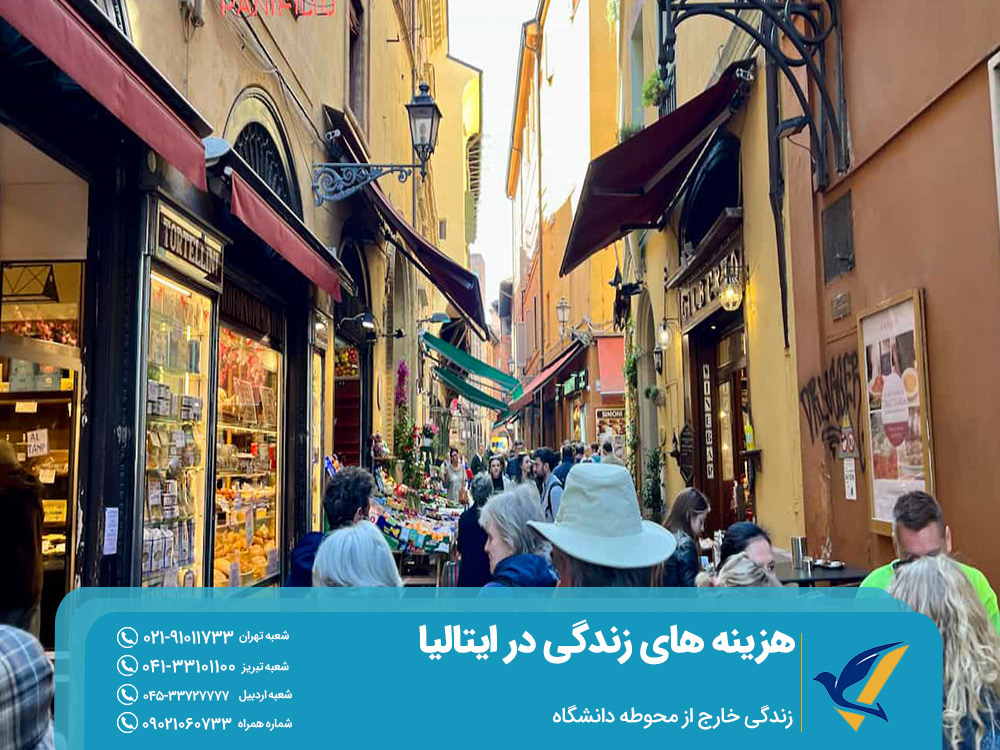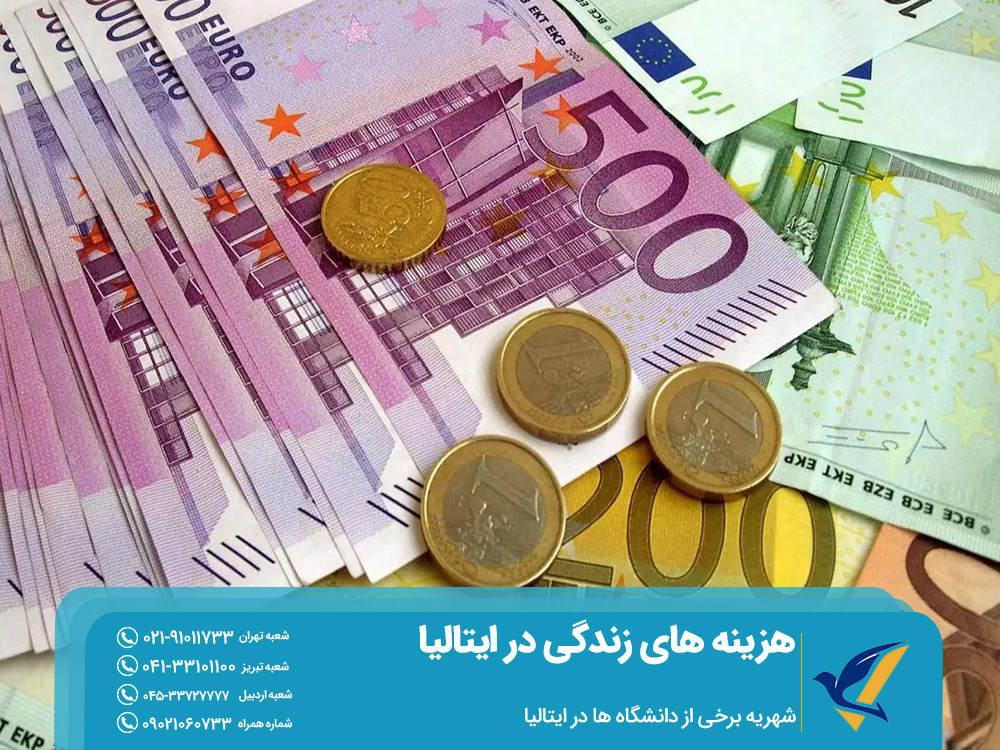Italy, with its rich cultural heritage, beautiful landscapes, and renowned educational institutions, has long been one of the most popular destinations for international students. According to recent statistics, the country hosts over 60,000 international students from various parts of the world. If you’re considering studying in Italy, you may be surprised by the cost of living and tuition fees in the country.
Italy is renowned for its educational quality, artistic and cultural impact, historical significance, and its ancient universities. Compared to English-speaking countries and other European destinations, Italy offers a very affordable option for studying abroad. In this article from Elm Vira, we will explore the costs of student life in Italy.
Advantages of Studying in Italy
Due to recent reforms in the education system and the affordability of living expenses, Italy has attracted a growing number of international students. The Italian education system is particularly well-known for its strong programs, especially in fields like medicine, where Italy is a top competitor. Thanks to the government’s continuous efforts to improve academic and research infrastructures, Italy now ranks among the countries with the highest educational standards in the world. These programs include studies in medicine, dentistry, nursing, and more.
Other popular fields among international students in Italy include fashion and design, business and management, architecture, engineering, humanities, arts, and culinary programs. Italy’s reputation for art, history, and architecture encourages many students interested in these fields to consider studying in Italy. With a significant influx of students from around the world, Italy has built a strong infrastructure to meet their needs. From affordable student housing options to entertainment and cultural activities, Italy’s economy thrives within the student community.
In addition to affordable living costs, Italy is an enchanting country offering some of the best food and beverages in the world. The country boasts the oldest universities in the world and has a long and prestigious history of providing high-quality education.

A Look at Living Costs in Italy
If you’re considering studying in Italy, one of the most important factors to consider is the cost of living. The country is known for its quality education, artistic and cultural impact, historical significance, and its ancient universities. Compared to English-speaking countries and other European nations, the cost of student living in Italy is quite affordable. Generally, the average annual cost of living for international students in Italy ranges from €10,000 to €20,000, depending on factors like location, accommodation, and lifestyle.
Living expenses in popular student cities in Italy, such as Rome, Milan, Florence, and Bologna, tend to be higher compared to smaller cities or rural areas. Accommodation costs, including rent and utility bills, can make up a significant portion of a student’s expenses.
Food costs can be managed by cooking at home rather than dining out. Transportation, an important part of living expenses in Italy, is quite reasonable, with options like public transport cards available.
Breakdown of Living Expenses in Italy (2024)
Here’s a look at the living costs in Italy for students in 2024, based on various online resources:
- A meal in a high-end restaurant: €15
- A meal for two in a mid-range restaurant: €60
- A bottle of soda: €2.39
- Water (1.5 liters): €0.44
- 1 liter of milk: €1.45
- A loaf of bread: €2.01
- 1 kg of rice: €2.62
- Eggs (12 pieces): €3.46
- 1 kg of apples: €2.00
- 1 kg of potatoes: €1.54
- One-way public transport ticket: €1.70
- Monthly transport pass: €35
- 1 liter of gasoline: €1.85
- Taxi fare: €5
- Utility bills (water, electricity, heating, etc.) for an 85 m² apartment: €199.62
- Internet (60 Mbps): €27.59
- Gym membership (monthly): €47.60
- Cinema ticket: €9
- A pair of jeans: €77.36
- Summer clothes: €32.61
- A pair of shoes: €84.17
Accommodation Costs
- 1-bedroom apartment in the city center: €783
- 1-bedroom apartment outside the city center: €581
- 3-bedroom apartment in the city center: €1,422.55
- 3-bedroom apartment outside the city center: €988.18
These figures reflect the typical costs a student might encounter in major cities and should help in budgeting for living and studying in Italy.

Living Costs in Italy Based on Student Accommodation
Living costs for international students in Italy can vary depending on whether they choose to live on-campus or off-campus. Below, we will examine both options:
Living Costs in Italy: On-Campus Accommodation
Accommodation: On-campus accommodation typically includes dormitories or student residences. However, due to high demand, it can be difficult to find. The cost of on-campus accommodation varies depending on the university and room type. On average, the monthly cost of staying in university accommodation ranges from €200 to €600.
Meal Plans: Many on-campus accommodations offer meal programs that provide access to dining halls and canteen facilities, helping to reduce living expenses for students. The cost of meal plans varies depending on the university and the level of services provided. On average, monthly meal plan costs range from €150 to €300. Many universities also offer subsidized meals and special programs for most students.
Utilities: Services such as electricity, water, heating, cooling, and internet are typically included in the accommodation costs.
Total Monthly Costs: Taking all living expenses into account, international students living on-campus in Italy would typically pay between €400 and €900 per month.

Living Outside the University Campus
Accommodation: Renting an apartment outside the university campus provides students with more accommodation options but also increases both responsibilities and living costs. The cost of accommodation can vary greatly depending on the location, size, and quality of the property. On average, the monthly rent for a shared apartment can range from €300 to €600, while a one-bedroom suite can cost between €500 and €1000.
Utilities: When students choose to live off-campus, they must pay for utilities such as water, electricity, and heating separately. These costs can range from €100 to €200, depending on the apartment’s size and usage.
Food: Food costs, whether students live on-campus or off-campus, are relatively similar. For students living off-campus, monthly food expenses typically range from €200 to €300.
Total Monthly Costs: Considering accommodation, utilities, food, and other expenses, the total monthly cost of living off-campus in Italy for an international student can range from €800 to €1500.
Living Costs in Major Italian Cities
Living costs in Italy can vary significantly based on the city of choice. The choice of city and university directly affects the living expenses for students. Below, we examine the costs in four major Italian cities.
1. Living Costs for Students in Rome
Rome, the capital of Italy, is the most populous city in the country. As expected, living costs in Italy, particularly in the capital, are higher than in other cities. Students who choose to study in Rome can expect to pay between €500 and €800 per month for renting a room, depending on the location, amenities, and furnishings.
Utility costs for water, electricity, and gas can range from €30 to €90 per month. In terms of food, students in Rome can expect to spend around €40 to €50 per week on groceries, with a monthly food budget of approximately €300.

2. Studying Abroad in Bologna, Italy
Bologna, the largest city in northern Italy, is known for its famous foods such as pasta, cheese, and beverages. Accommodation is one of the main factors affecting the cost of living in Italy in Bologna. A shared one-bedroom apartment, excluding utilities, typically costs around €400 per month. For international students, shared rooms at lower rent prices are also available, costing as little as €300 per month.
Public transportation in Bologna is affordable, with a monthly cost of around €15. Students can further save on living costs in Bologna by purchasing a city pass, which allows for 10 bus trips for just €14. Including food and other essential living expenses, the monthly cost of student life in Bologna is estimated to be between €750 and €1100.
3. Living Costs in Venice, Italy
Venice, located in northeastern Italy, has slightly more affordable living costs compared to Bologna and Rome. Shared rooms in Venice typically cost between €200 and €250 per month. The cost of groceries is around €200 per month for students living in the city. Dining out in Venice can range from €6 to €16 per meal.
Additionally, students in Venice are eligible for the Venezia Unica card, which provides discounts on transportation tickets. To experience student life in Venice comfortably, the total living expenses can range from €600 to €700 per month.

4. Milan, Italy
Milan, the fashion capital of Italy, is home to five renowned international universities, making it the first choice for many students planning to study abroad in Italy. The cost of student living in Milan is similar to other cities, with rent for a single room ranging from €300 to €550 per month. For those looking to reduce living expenses, shared apartments are a popular option.
Landlords often do not include utility costs in the rent. Depending on the size of the apartment and room, utility bills (such as water and electricity) can cost around €80 per month. Monthly food expenses for students in Milan are estimated at €150 to €200. Additionally, students can use public transportation, including buses, trains, Uber, and taxis, with transportation costs potentially reaching €39 per month.
Tuition Fees in Italy
Italy is home to some of the oldest universities in the world and continues to attract international students due to its long-standing reputation for quality education. One of the factors that makes studying abroad in Italy appealing is the increasing number of English-taught programs offered at affordable tuition fees. Overall, the cost of living and tuition fees in Italy are generally lower compared to other European countries.
Higher education institutions in Italy have different approaches to determining tuition fees, but the Italian government has established various limits on tuition structures.

Tuition Fees at Some Universities in Italy
Here is an overview of the tuition fees at several universities in Italy, which is an important part of the overall living costs:
- Sant’Anna School of Advanced Studies: This prestigious institution has an average tuition fee of €4,000 per year for its Master’s programs. International students from non-EU countries can apply for partial tuition exemptions.
- University of Trento: The maximum tuition fee for all programs is €6,000. International students can receive a tuition exemption based on their acceptance scores, so higher grades can lead to lower tuition fees.
- University of Bologna: The university offers a wide range of programs with an average fee ranging from €500 to €3,000. First-year students and students with low incomes can be exempt from paying tuition fees.
- Politecnico di Milano: For students from non-EU countries, the tuition fee is €3,891 per year. Students can reduce their living expenses in Italy by applying for tuition exemptions and scholarships.
- University of Siena: Known as one of the most affordable universities in Italy, the annual tuition fee is €1,800. The fees are calculated based on the student’s financial status, making it more affordable compared to other higher education institutions.
Tuition Fees at Other Renowned Universities in Italy:
- Sapienza University: €2,000 to €4,000
- University of Padua: €2,533 to €2,948
- Politecnico di Milano: €1,000 to €3,300
- University of Bologna: €1,850 to €2,100
- University of Milan: €2,500 to €3,680
- University of Pisa: €1,900 to €3,900
- University of Florence: €1,700 to €2,860
- University of Turin: €1,500 to €2,560
- University of Tor Vergata: €1,800 to €2,500
These fees can vary depending on the program, the student’s financial status, and eligibility for exemptions or scholarships.

Tips for Reducing Living Costs in Italy
As an international student, budgeting and managing living expenses in Italy while studying is crucial. Many students take on part-time jobs or internships to cover their living costs. By managing finances wisely and looking for opportunities to earn additional income, you can have a financially stress-free student life in Italy.
Strategies for Reducing Living Costs in Italy:
- Choose Shared Housing or Student Dormitories: Sharing an apartment with other students can significantly reduce rent and utility costs.
- Opt for Housing Outside the City Center: Housing in city centers is generally more expensive. Look for accommodation in the suburbs that are well-connected by public transportation.
- Cook at Home: Preparing meals at home or with roommates can help save on living expenses. Use local markets and grocery stores to find affordable food items.
- Pack Your Lunch: Instead of buying food on campus, prepare your lunch to take with you.
- Use Public Transportation: Monthly or weekly public transportation passes are usually cheaper than individual tickets.
- Walk or Ride a Bicycle: Whenever possible, walk or cycle to university and other destinations. This not only saves on living costs but also promotes a healthy lifestyle.
- Take Advantage of Student Discounts: Many attractions, museums, theaters, and cinemas offer discounts for students. Always carry your student ID to take advantage of these deals.
- Choose Low-Cost and Free Activities: Look for free events, festivals, parks, and cultural activities to enjoy without spending much money.
- Join Student Organizations: Join student clubs that organize affordable social events and activities for students.
- Use Budgeting Apps: Use budgeting apps and platforms to track your expenses and identify areas where you can cut costs.
Conclusion
Studying in Italy and living as an international student can be a richly rewarding experience. Understanding and managing your living costs in Italy is essential to ensure a comfortable stay without financial stress. By researching affordable accommodation options, being mindful of food costs, utilizing public transportation, and making use of student discounts, you can reduce overall living expenses in Italy.
Wise planning and budgeting will help you make the most of your time in Italy while maintaining your financial stability. For more information on student living costs in Italy and tuition fees, feel free to contact our experts at Elm Vira Institute by filling out a free consultation request form.
میانگین امتیازات 5 از 5
Vote count: 1 Vote